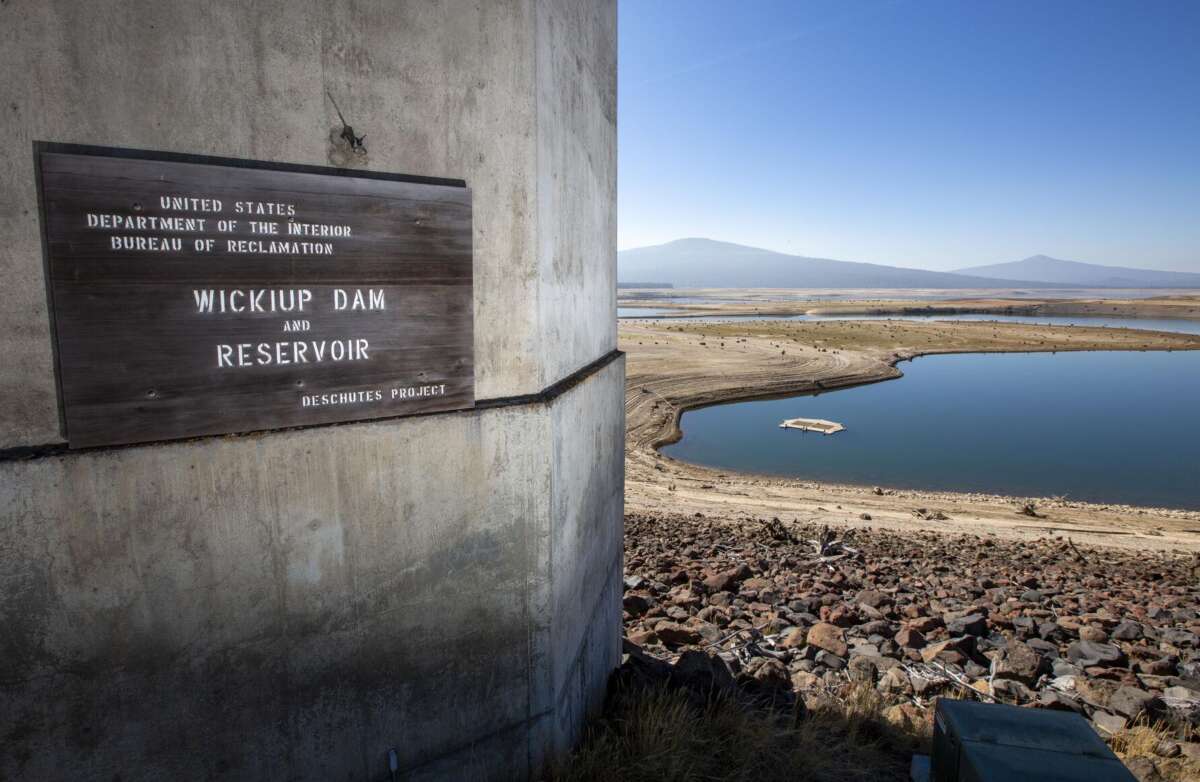This article was published on: 02/20/23 11:18 AM
A drought emergency declaration is being considered again by Deschutes County commissioners. Approval could help local farmers and ranchers access loans and state support to overcome losses related to the drought, now in its fourth year.
The agenda for Wednesday’s County Commission meeting states that continuing weather conditions within Deschutes County are not likely to resolve drought conditions and may cause widespread and severe damage to livestock, wildlife, natural resources, recreation, tourism, and related economies.
“It is very important. I am sure we will approve this,” said Patti Adair, one of the three county commissioners.
“I am hoping water can be prioritized to reach farmers and ranchers. I am just hoping we get more snow.”
The county has declared a drought emergency in each of the past three years. Back-to-back drought emergencies were also declared in 1991-1992 and 2001-2002. Drought impacts tourism, as it means shorter and inconsistent seasons for whitewater rafting and skiing. It also stymies agricultural efforts by limiting the number of acres farmers can plant. Last year farmers in the North Unit Irrigation District were planting just a quarter of their normal acreage.
Last month Crook and Jefferson counties each declared drought emergencies. Both declarations were approved last week by Gov. Tina Kotek.
As of Monday, the Upper Deschutes and Crooked River basins had snowpack that was 95% of normal, according to data compiled by the federal Natural Resources Conservation Service. Precipitation for the water year, which began Oct. 1, was 80% of normal. Deschutes County reports that overall precipitation has been below average for six straight years.
The most recent Drought Monitor map shows 30% of Deschutes County in extreme or exceptional drought, the two highest categories of drought. While that is still concerning, it’s a better situation compared to a year ago when the monitor estimated 75% of the county was in extreme or exceptional drought.
Wickiup Reservoir is 55% full with about five weeks left until the start of the irrigation season. Other reservoirs in the region are faring worse. Crescent Lake is 9% full; Prineville Reservoir is 13% full, and Ochoco Reservoir is empty, according to data compiled by the U.S. Bureau of Reclamation.
Once the governor approves a county’s drought emergency, farmers and ranchers can apply for low-cost loans to cover the expense of buying supplies, water and hay.
“Drought declarations can help find funding for projects, including on-farm projects as well as private piping, so supply can be stretched in times of water shortages,” said Craig Horrell, general manager for Central Oregon Irrigation District.
Irrigation districts were hopeful in December that this would be the year to end the drought following heavy snowfall at the end of 2022. But conditions since December have been mostly cool and dry.
The seasonal climate forecast for March through May issued by the Oregon Department of Forestry states that Central Oregon will have warmer-than-average temperatures this spring with precipitation near or slightly above average. The department says the state is expected to finish the season with near-average snowpack.
-Michael Kohn




